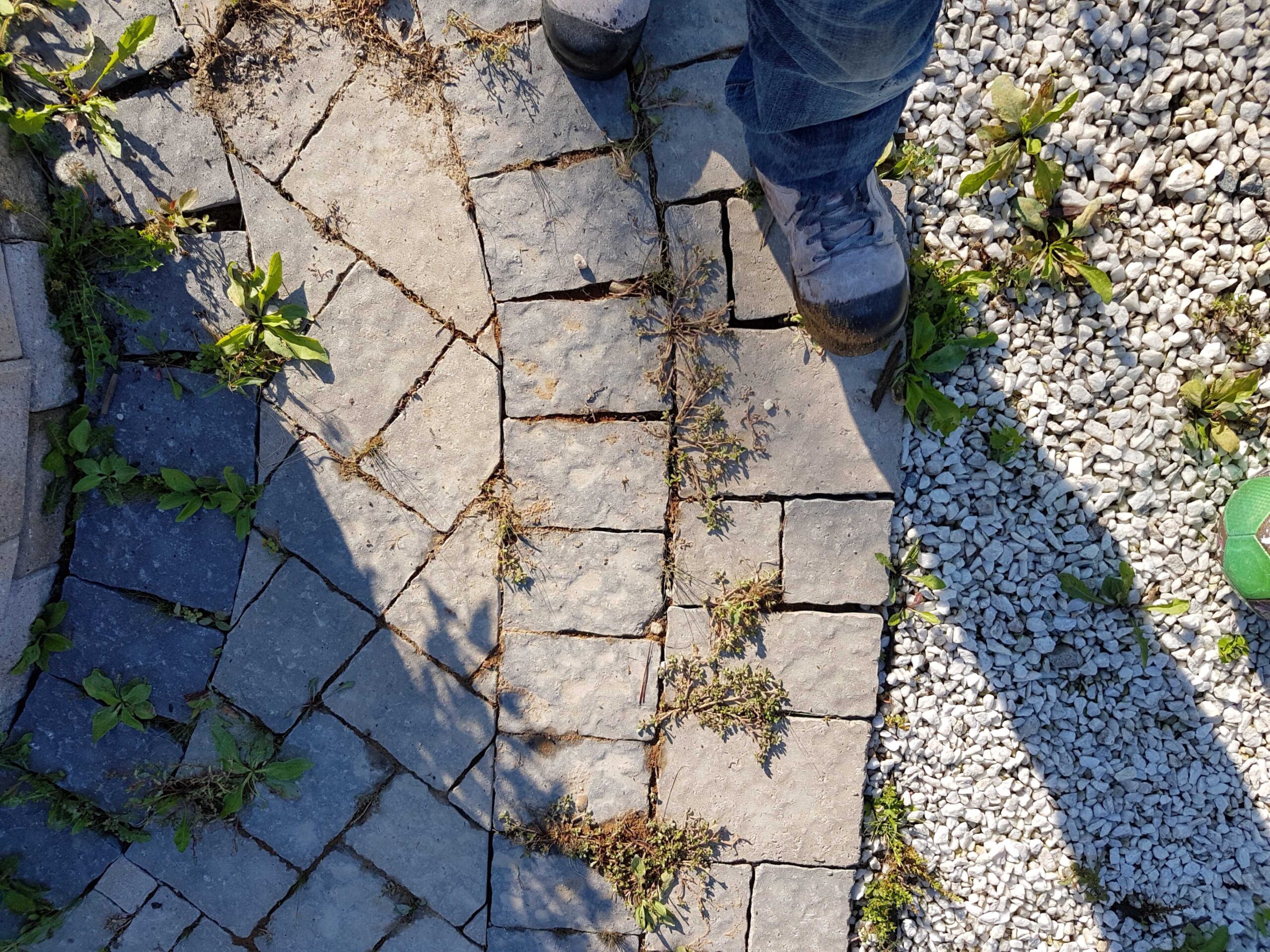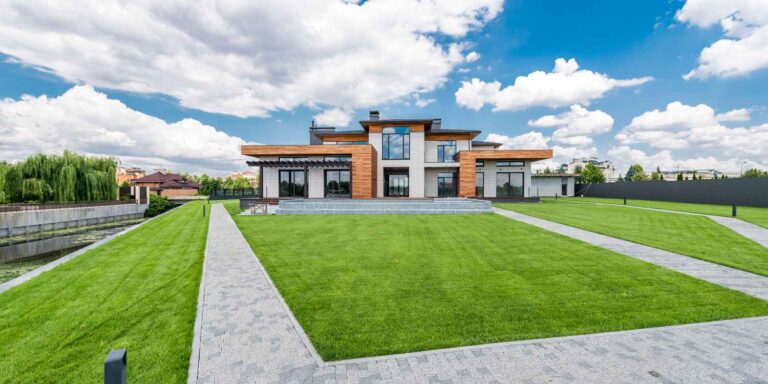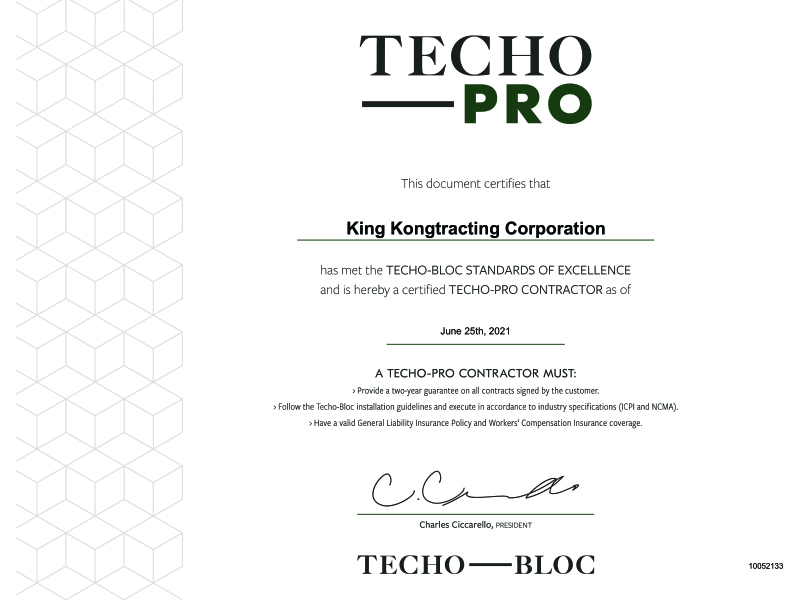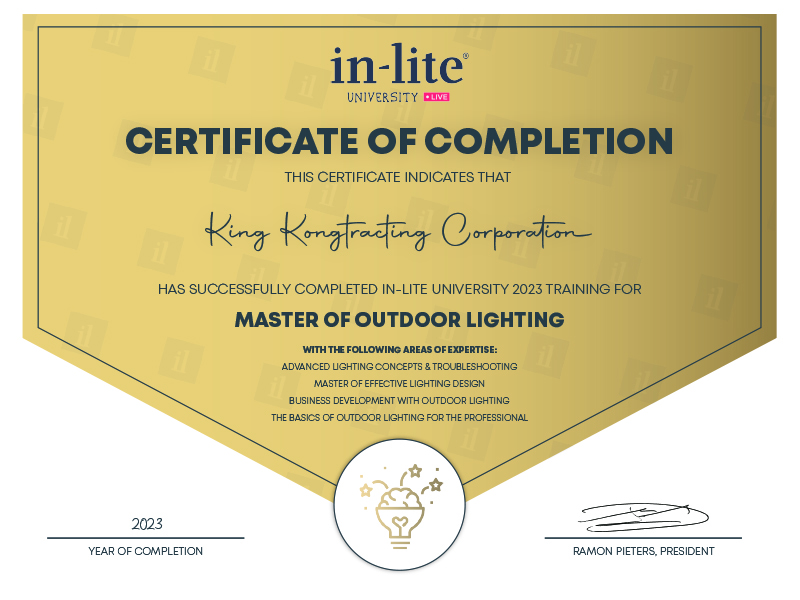
You just spent thousands of dollars on interlocking. Whether your investment includes a small walkway, a large backyard, or a complete landscape project, you should enjoy the benefits of your beautiful outdoor space to the fullest. Certain environmental conditions and a variety of use may require additional care and maintenance to enable you to enjoy your investment for years to come. Interlocking repair and maintenance is important!
By definition, maintenance involves functional checks, servicing, repairing, or replacing materials used to complete your interlocking project. Here’s how to protect your investment by completing interlocking repair & maintenance.
Preventative Maintenance for Interlocking Repair & Maintenance
Functional checks are easy to complete, as all it takes is visually inspecting your interlocking. We recommend at the beginning of Spring, to walk your property and look for any sinking of stones, damage, discoloration, or safety hazards (such as a falling retaining wall). This will give you a good idea if any of the harsh Canadian elements have caused any damage to your interlocking. This ensures you’re conducting appropriate preventative interlocking repair & maintenance.
Upon observing the property and interlocking, make any notes of items that should be looked at by a professional contractor. Routine interlocking repair & maintenance is not expensive but will ensure that your interlocking continues to look great year after year.
Hiring A Professional Contractor for Interlocking Repair & Maintenance
Professional contractors are knowledgeable and will be able to make recommendations on interlocking repair & maintenance. Here are 5 services they can perform.
Re-Leveling Sunken Driveways, Backyards or Walkways
The four seasons in the unique Canadian climate allows for the ground to repeatedly freeze and thaw. This means that the base materials of any interlocking project can expand and retract. Over time, this will cause the interlocking stones to shift or sink. Interlocking repair & maintenance is the most common way to enhance your outdoor project for a reasonable cost.

This can be fixed by removing the existing pavers, evaluating the base materials and re-leveling and laying the pavers. Depending on what base materials were used previously, you may need to remove it and ensure proper base materials are used. A good contractor will know which aggregates are suitable, and which ones are not recommended. Ensuring proper drainage is also something a good contractor will know and take into consideration when completing a interlocking repair & maintenance project.
Repairing Retaining Walls & Steps
Retaining walls can sink or become unsafe over time. This may be due to erosion, a weight-bearing wall or a change in the elements. It’s important to repair retaining walls once you notice blocks or copings have shifted.
- Replacing stones is not expensive and an easy way to repair retaining walls.
- Steps – Interlocking Repair & Maintenance
- Steps can be a huge safety hazard and a potential liability. Step interlocking repair & maintenance should be fixed immediately. If you notice any damage or the steps shift, reach out to your local contractor to get a consultation and a quote.
Paver/Slab Repair & Replacement
Most interlocking pavers and slabs shouldn’t need to be replaced for a long time. However, not all pavers and slabs are made equally. There are certain manufacturing techniques and pavers/slabs that are better quality than others.
- Our favourite pavers to work with are Unilock and Techo Bloc. They both have great quality, selection and warranties. However, there are others, in our opinion, that don’t last as long and keep a nice finish.
- Damage, such as chips, can happen, especially with heavy vehicular or foot traffic. It’s important that pavers don’t become unsafe and a tripping hazards.
Power Washing, Sand & Seal
Power washing, sand and seal is probably the most common form of interlocking repair & maintenance. It enhances the longevity of your interlocking. We recommend power washing and sealing your interlocking every 5 years.
- Sealers enhance the colour and give your pavers a wet look. There are two types of sealers: solvent based and water based.
- A solvent-based sealer is a micro-porous transparent resin that protects pavers and slabs made of concrete. It reduces oil and dirt penetration and makes cleaning easier. Easy to apply with a foam roller or sprayer, it penetrates deeply for maximum effectiveness and durability. It will not peel or discolor and is capable of resisting the effects of people’s use and nature (rain, snow, ice, vehicle tires, etc.).
- A water-based sealer is a color-enhancing micro-porous transparent resin that protects pavers and slabs made of concrete. It reduces oil and dirt penetration and makes cleaning easier. Easy to apply with a foam roller or sprayer, it penetrates deeply for maximum effectiveness and durability.
- Sealers should not be applied more than once in three years, to a maximum of two applications. Too many applications will create a film on the surface which may discolor in sunlight.
When using chemicals to clean paving stones, the manufacturer’s instructions should be carefully read and strictly adhered to. These interlocking repairs & maintenance tips mentioned above are not typically very expensive. It all depends on the condition and age of the existing interlocking.

How To Maintain Your Interlocking Yourself
We recommend general maintenance each spring using a coarse-bristle broom and a general purpose paver cleaner. The joints between paving stones are the most vulnerable areas of any interlocking stone installation. Depending on the climate and amount of use, even the most expertly installed patio may require attention to the joints at some time in its life. Interlocking repair & maintenance is important.
When using a garden hose to clean a paved area, you should direct water at the surface at an angle, not greater than 30 degrees and across the diagonal. Not parallel to the joints as the intensity of the water stream may be too harsh and may dislodge the jointing sand.
A power washer may be used but you must exercise caution to avoid damaging the surface of the pavers. Many pressure washers have enough power to expose the aggregate on the surface. Nozzle style, distance from the surface and pressure (psi) are all factors which can affect the outcome. We recommend that you always test the cleaning on several spare stones left over from the original installation. Finally, when using a cleaning product, the product must be thoroughly rinsed from the surface and channeled to suitable drainage points. Once the area has been cleaned, it should be inspected to ensure the integrity of the sand joints. Any eroded joints should be re-sanded as necessary.
Removing Efflorescence
Efflorescence is a naturally occurring powder-like deposit, usually white, that occasionally develops on the surface of concrete, often just after an installation is completed. Although unattractive, efflorescence is usually not a problem and will generally disappear on its own over time.
We recommend using a product by Unilock, Efflorescence Remover. This product is specially formulated to dissolve efflorescence whitish salt deposits and remove dirt on paving stones and concrete, without discoloring or damaging surfaces. It cleans evenly and enables the sealant to better penetrate the pavers. Important note: efflorescence can be minimized by avoiding the use of base and jointing materials such as limestone screenings or slag. Properly graded and washed jointing sand is also recommended over regular pit sand.
Removing Paint, Tar or Tire Marks
From time to time, a more serious stain can be caused.
A paint can tipping over or someone tracking in tar from a neighboring property or the street. Rubber tires can also mark up a beautiful installation. Tire marks are usually due to a combination of factors. When the weather is hot and both the tires and the paving stone driveway are new, you may get some marking.
If you were to look at one of the stones under a microscope you would see tiny particles of rubber clinging to the surface of the stone. New paving stones are generally a little more abrasive than older pavers are. The tiny aggregate particles on the surface will sometimes remove tiny particles of rubber from a tire, especially a new tire or one with the rubber softened by design or temperature. Always avoid turning a tire needlessly on a paver surface. The vehicle should always move and turn simultaneously in a non-aggressive manner.
The good news is that rubber markings are easily removed and can sometimes be removed simply by weather, or water along with a light scrubbing. Product Recommendation: UNILOCK PAINT, TAR, AND RUBBER REMOVER. This cleaner removes paint, tar, rubber, chewing gum, and other sticky substances from paving stones and concrete slabs. Follow the directions on the container for the best results.
Removing Moss
Moss is one of those things that one person considers a nuisance and another considers attractive, adding to the “country” or “old English” look and feel of the installation. Moss generally develops in shaded areas that are slow to dry up after rain. If you want to remove moss, it is recommended that you simply pressure wash the surface after applying a solution of 20% dish soap and 80% water to the surface. Do not use the pressure washer on high power when rinsing, or you risk damaging the surface.
Removing Stains Caused By Plants
Trees can stain paving stone surfaces in a number of ways. Flowers, fall leaves, and birch tree branches can leave stains on the surface when combined with moisture. In the majority of cases, several rains or the passing of a winter will resolve the issue naturally, but the combination of moisture and the branches from young birch trees (the brown stems) can stain in mid-season even after a heavy rain. A light pressure washing or the application of copious amounts of water in combination with a light scrubbing will yield favorable results. Common dish soap or Unilock General Purpose Cleaner will also accelerate the cleaning.
Interlocking repair & maintenance can be completed by a general contractor or landscaper.
Contact King Kongtracting Corporation for a free interlocking repair & maintenance consultation and quote. Interlocking repair & maintenance services available: Toronto, North York, Markham, Vaughan, Richmond Hill, Stouffville, East Gwillimbury, West Gwillimbury & Georgina.






